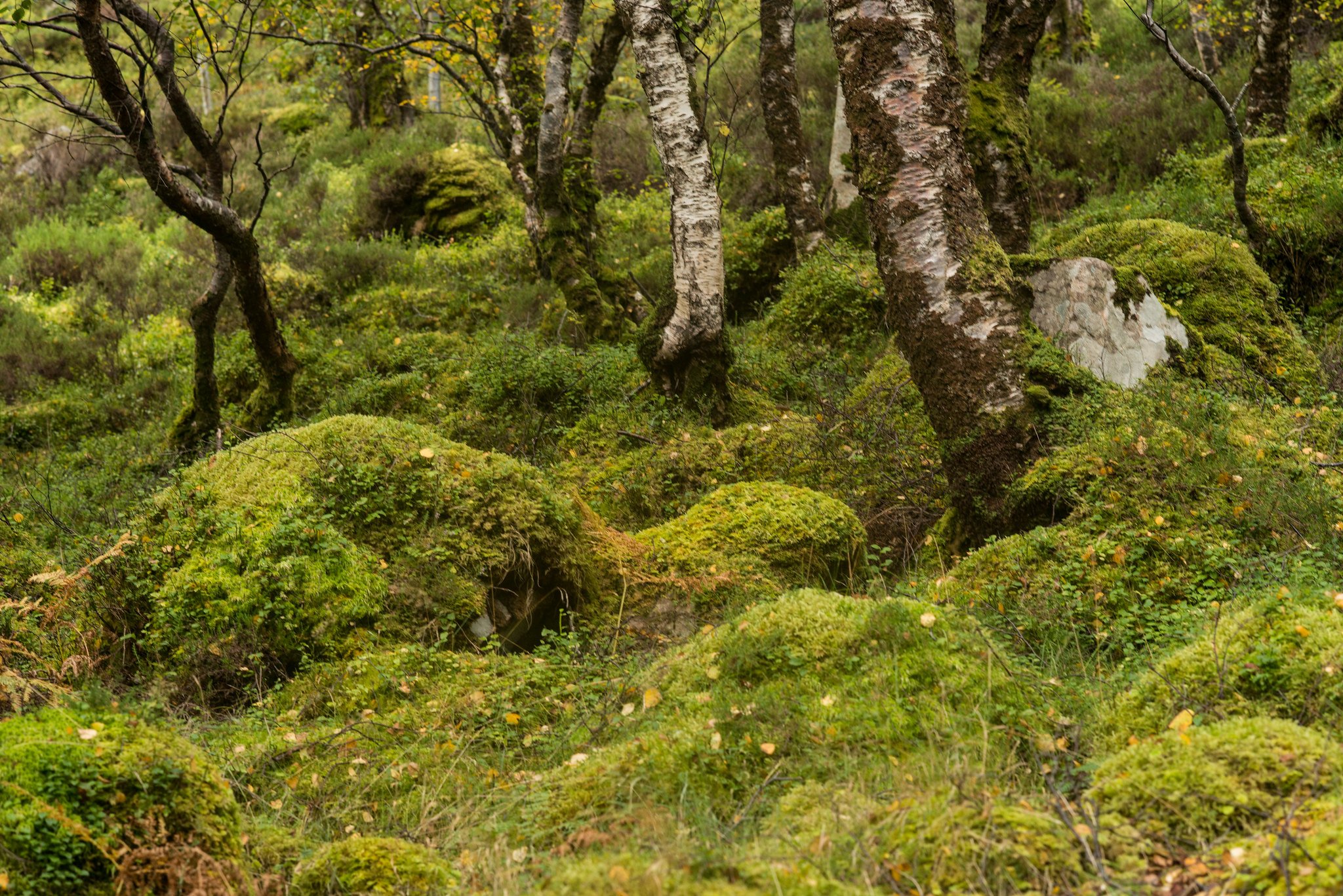The unique rainforest of Ben Shieldaig
The Woodland Trust’s Ben Shieldaig estate is in Upper Loch Torridon, Strathcarron, in the north west Highlands. Situated in Scotland's hyper-oceanic rainforest 'zone', it's home to Caledonian pinewood and ancient semi-natural birchwood, and is bursting with biodiversity. Hugh Gosling tells us more.
Rainforests are the planet’s oldest living ecosystems, incredibly diverse and complex habitats that are home to more than half our plant and animal species yet covering just 6% of the Earth’s surface. When you think of a rainforest, you might picture a humid, tropical jungle with tall trees and a shady forest floor, exploding with plant and animal life. Yet, rainforests thrive on every continent and can occur in perhaps unusual places, including Shieldaig.
“Scotland’s rainforest is temperate; you tend to get shorter and less diverse trees than in the tropics but a great deal of interesting biodiversity is found on rocks and tree trunks below the canopy, especially in terms of bryophytes and lichens,” says botanist Dr Oliver Moore, lichen and bryophyte advisor for the Alliance for Scotland’s Rainforest.
“What they share is the rainfall. In Scotland, rainforests get a minimum of 220 days a year, which may be horrendous from a tourist point of view, but a wet day only has to have 1mm of rain,” he says, adding that mild winters and cool summers are also crucial for our rainforests.
“Ben Shieldaig is a wonderful habitat especially the diversity in bryophytes, which is incredible. We’ve counted 212 species, about a fifth of the British total, just in the Shieldaig woods SSSI,” says Dr Moore. “Diversity is important but Shieldaig is also home to some internationally important bryophytes. For example, the prickly featherwort (Plagiochila spinulosa) is rather rare outside of Scotland’s rainforest and there is a decent population at Ben Shieldaig.”
There’s also the nationally rare moss known as Irish daltonia (Daltonia splachnoides). “This healthy population is associated with a single willow that overhangs a dripping crag that regularly becomes a waterfall when it rains. Irish daltonia thrives in this splash zone,” says Dr Moore.“These are the stars of this incredibly rich habitat.”
Another Shieldaig ‘star’ is the sparkling signal-moss (Hageniella micans) that grows on low stones embedded in the woodland floor. If the sparkling signal-moss had ears, they would have been burning recently, as the species has been the subject of some debate. Dr Moore is among the experts that have shared their concerns about the Woodland Trust’s plans to erect fencing to totally exclude deer from the woodland creation zones.
“Sparkling signal-moss is very susceptible to competition from more common mosses but their habitat is maintained by the deer as they move through the woodland creating trails and browsing,” says Dr Moore. “It is a nationally scarce species and is considered endangered at a global scale according to guidelines being drawn up for the International Union for Conservation of Nature. And Ben Shieldaig has a good population.”
The WT is looking to change its fencing plans and reduce its deer population in the woods over time. “If we can get the numbers down to a level that allows natural regeneration for the palatable tree species, such as rowans and willows, we can help the bryophytes and lichens in the long term too. However, there will still need to be enough deer activity to continue creating habitat for the likes of sparkling signal-moss and other internationally rare bryophytes.
“Fencing might give you an incredible number of trees but we need to ensure the existing rainforest survives so that the bryophytes and lichens can colonise new areas of woodland without losing the species that make Scotland’s rainforest so special,” says Dr Moore.
Discover more about Ben Shieldaig https://www.woodlandtrust.org.uk/visiting-woods/woods/ben-shieldaig-estate/
This article first appeared in Ben Shieldaig News, Autumn 2022





